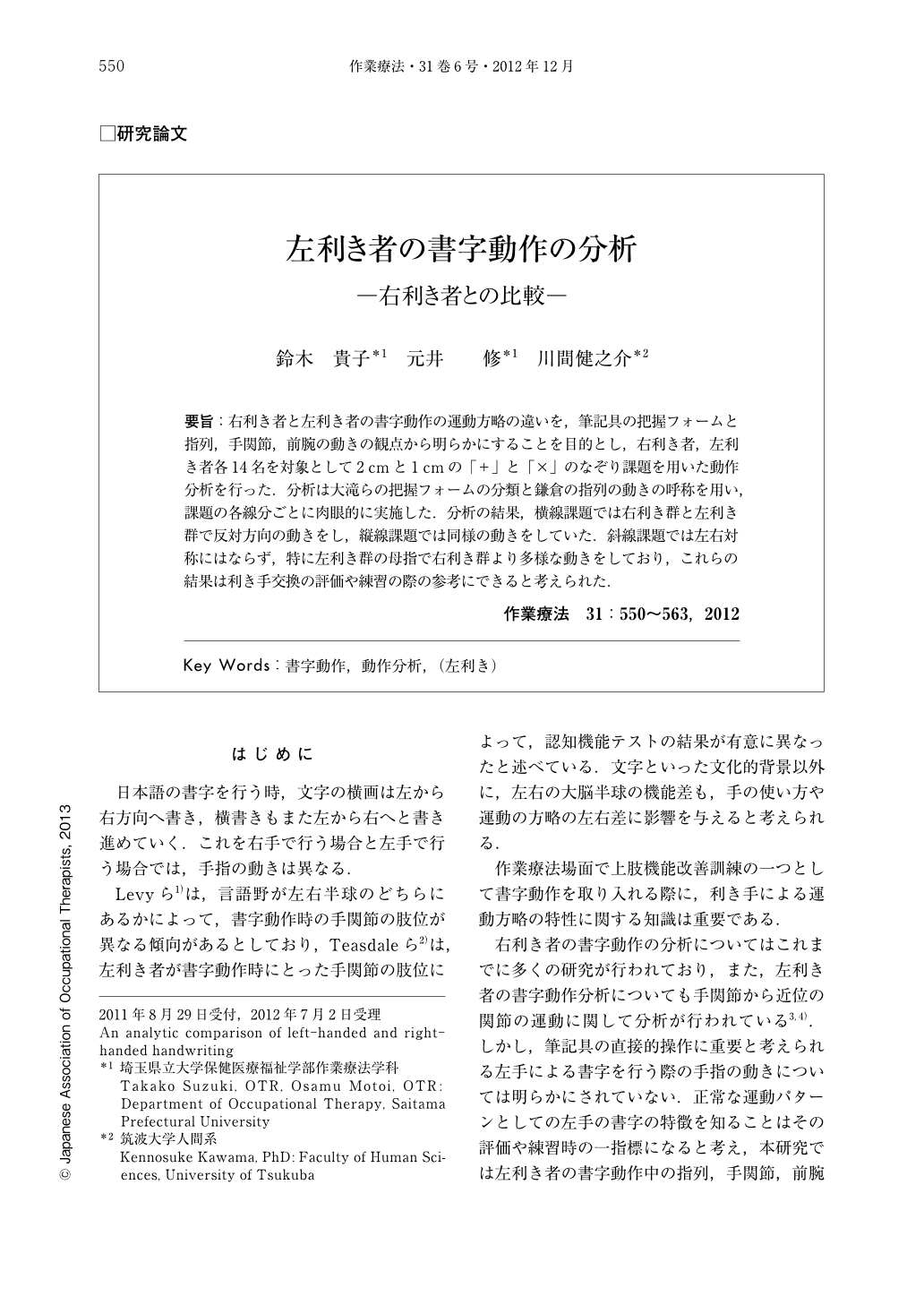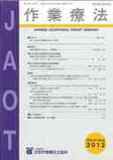Japanese
English
- 販売していません
- Abstract 文献概要
- 1ページ目 Look Inside
- 参考文献 Reference
要旨:右利き者と左利き者の書字動作の運動方略の違いを,筆記具の把握フォームと指列,手関節,前腕の動きの観点から明らかにすることを目的とし,右利き者,左利き者各14名を対象として2cmと1cmの「+」と「×」のなぞり課題を用いた動作分析を行った.分析は大滝らの把握フォームの分類と鎌倉の指列の動きの呼称を用い,課題の各線分ごとに肉眼的に実施した.分析の結果,横線課題では右利き群と左利き群で反対方向の動きをし,縦線課題では同様の動きをしていた.斜線課題では左右対称にはならず,特に左利き群の母指で右利き群より多様な動きをしており,これらの結果は利き手交換の評価や練習の際の参考にできると考えられた.
Pencil grip forms and movement patterns of the fingers, wrists and forearms among left-handed subjects were analyzed in order to describe the characteristics of left-handed handwriting. These characteristics were compared to those of right-handed subjects. Fourteen healthy left-handed subjects as well as 14 right-handed subjects participated in the study. The mean age of the subjects was 20.0. The each subject was observed while tracing a “+” and a “×” 1cm and 2cm in diameter with a pencil. The observation was described based on a pencil grip classification by Otaki et al. and a finger movement classification by Kamakura.
The movement of the wrist and finger joints was antagonistic between left- and right-handed groups during horizontal line drawing. On the other hand, the movement of these joints was closely matched between the two groups during vertical line drawing. During the diagonal line drawing, the joint movement between the two groups lacked similarities. The thumb in the left-handed group moved in a more complicated manner, compared to the right-handed group. The findings in this study could be guidance for OT intervention in switching hand-dominance.

Copyright © 2012, Japanese Association of Occupational Therapists. All rights reserved.


